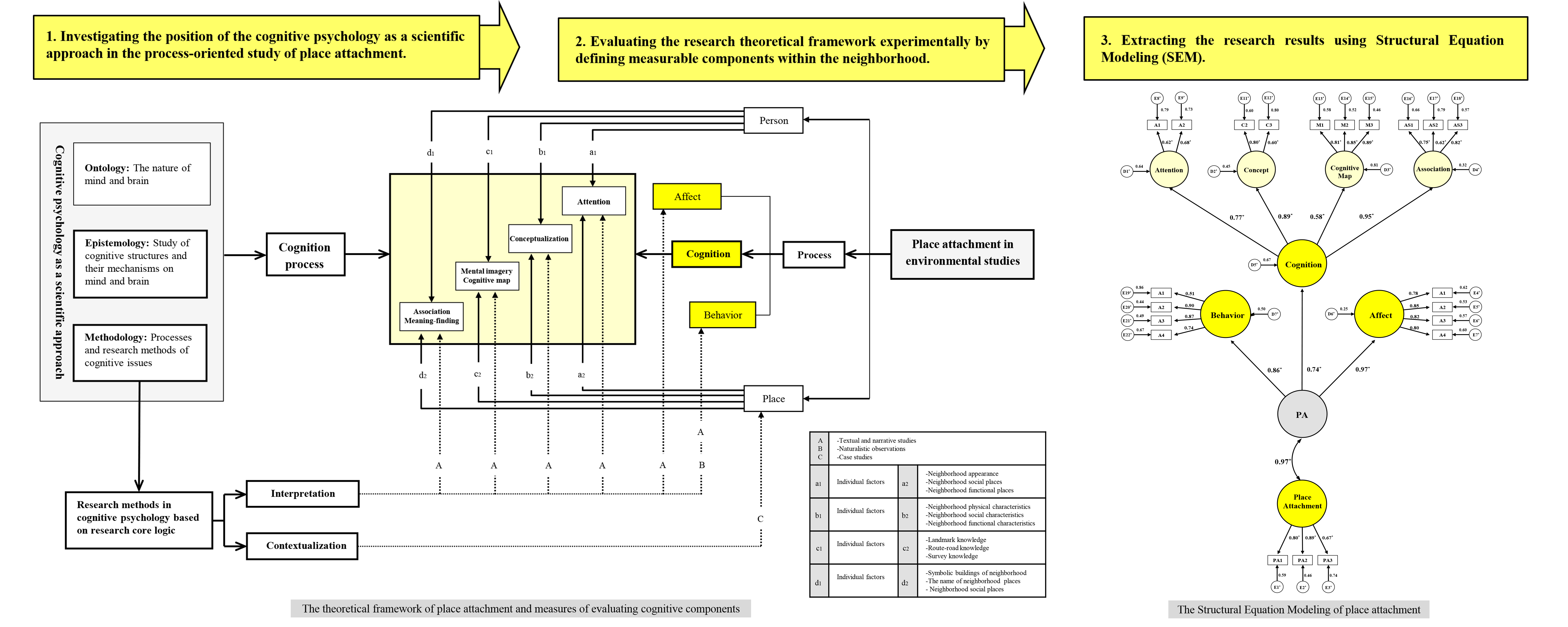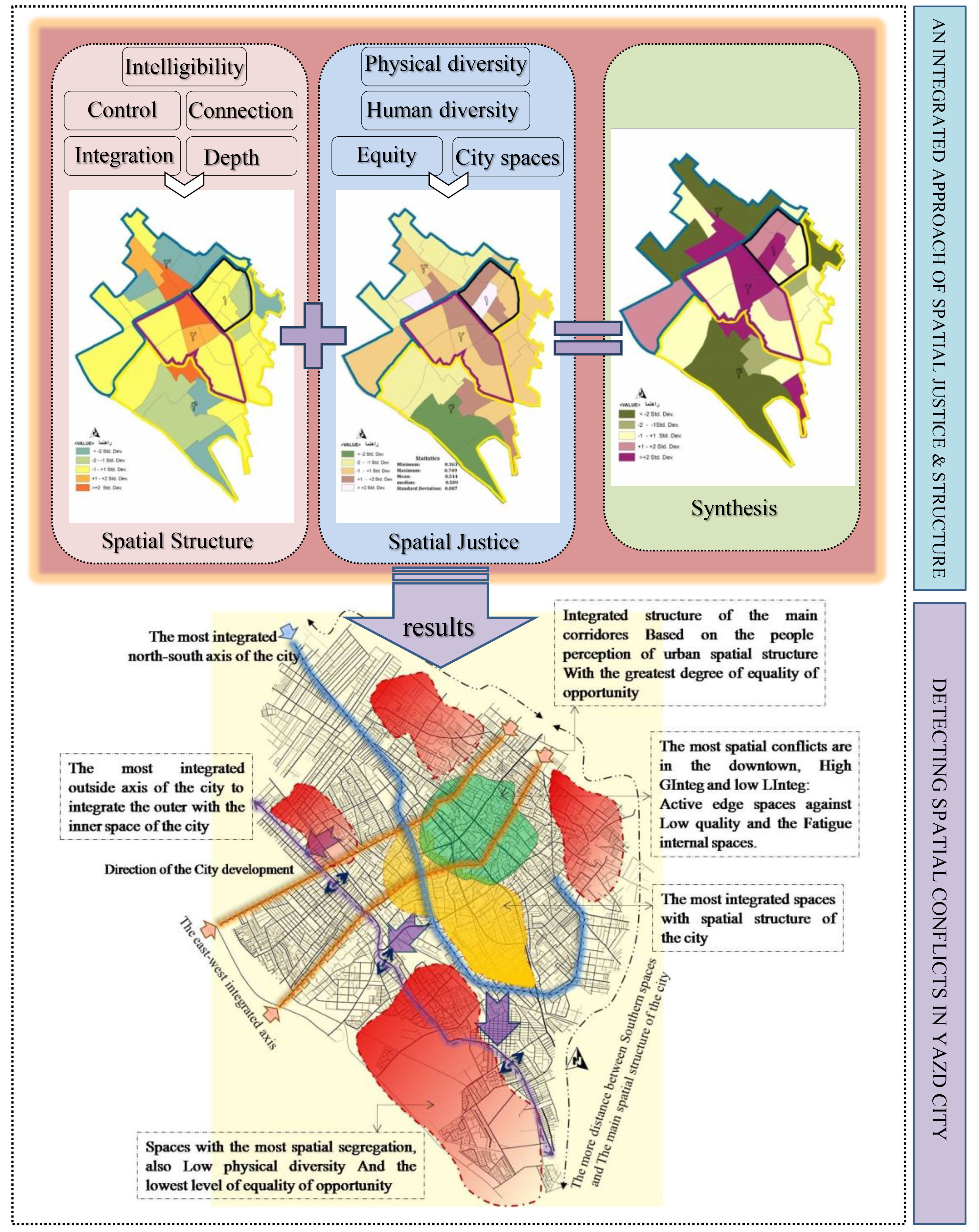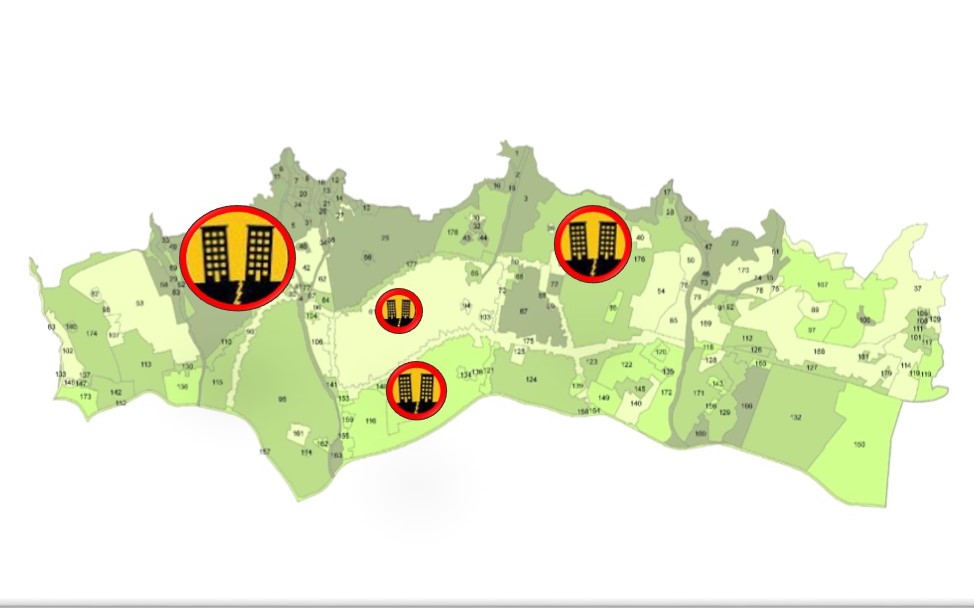Fri, Mar 28, 2025
[Archive]
Volume 27, Issue 2 (2017)
Abstract
|
Full-Text (PDF)
| Graphical Abstract
| Highlights


- Creating integration between urban spaces
- Spatial integrity in functional, perceptual, physical, social dimensions
- Increasing the continuity of the important natural structures and ecological corridors
- Continuity of the inner city network
- Creating dynamic through connectivity function with context in urban transect
Abstract
|
Full-Text (PDF)
| Graphical Abstract
| Highlights


- The process-oriented model of place attachment is realized with an approach of cognitive psychology.
- A cognitive psychological approach makes it possible to study the place attachment process by defining the process of cognition.
- A cognitive psychological approach provides various scientific methods and instruments to study the cognition process of place attachment.
- The most influential criterion on the attachment of residents, is the affect dimension; Behavior is the second and cognition is the third one identified in terms of process dimensions.
Abstract
|
Full-Text (PDF)
| Graphical Abstract
| Highlights


- Thermal performance of three clay block external walls systems in temperate and humid climate is calculated.
- The fluent software was employed to simulate and calculate the thermal characteristics.
- Air trapped between the internal and external walls (leaves) of cavity walls considerably influenced thermal resistance.
Abstract
|
Full-Text (PDF)
| Graphical Abstract
| Highlights


- Lack of desirable spatial quality at the central districts is due to incoherence and no integration structure with the entire city.
- The districts which have more coherent spatial structure have a better condition in justice distribution.
- Spatial structure is employed to argue that physical forms and spaces can alternately promote or suppress the sense of justice in the city.
Abstract
|
Full-Text (PDF)
| Graphical Abstract
| Highlights


- The urban village approach can be used for combining both rural and urban values in future urban developments for improving the localism.
- Combining and integrating the urban village approach with democratic norms of urban design can help to develop the social and democratic features of the urban villages, besides the environmental issues.
- The combinatorial principles, such as diversity, public life, public participation, social justice and equity, naturism, accessibility, contextualism, vitality, flexibility, inclusiveness, and also their sub-principles are tested in a hypothetical wasteland, to prove the practical aspects.
Abstract
|
Full-Text (PDF)
| Graphical Abstract
| Highlights


- Place branding is capable of playing a considerable contribution to economic empowerment of informal settlements by creating a marketable place identity.
- Branding an Informal settlement can rehabilitate it in all aspects of a place.
- The optimum brand identity of Falak-E-Din neighborhood is an identity built with an emphasis on human factors of the quarter’s identity
- The function of Empowerment plans in Iran can be improved by applying place branding approach






